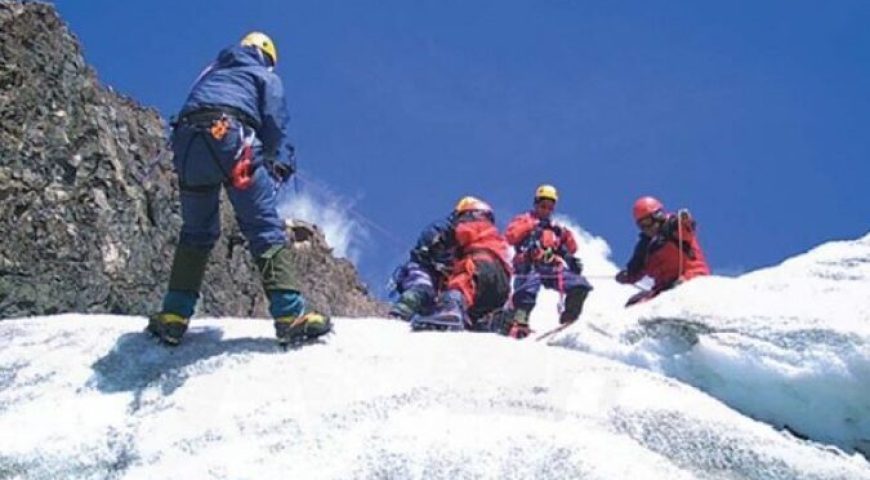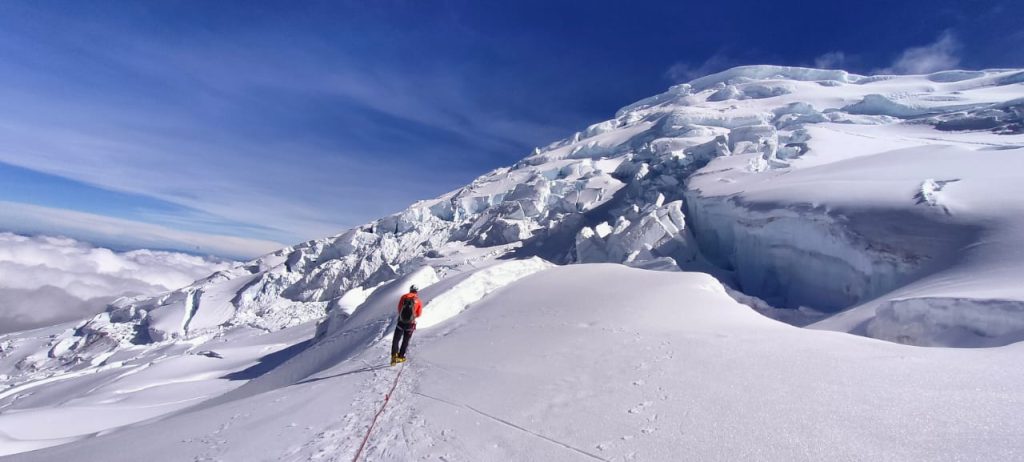
Fatal Accident on Cayambe
Fatal Accident on Cayambe: Lessons and Safety Insights
In the early hours of August 7, 2025, a Nicaraguan climber tragically lost his life on Nevado Cayambe after falling on a steep, snow-covered rocky slope. A large-scale rescue operation involving the Cayambe Fire Department’s GRAM team, the Ministry of Environment, and the Cayambe Mountaineering Club successfully recovered the body despite extremely difficult conditions. This tragedy highlights the persistent risks of high-altitude mountaineering and the dangers of climbing without professional guidance.
Suspicion of Illegal Guides Involvement
Authorities consider the circumstances suspicious because a fall from that elevation is uncommon for properly guided climbers.
Although the report says the person was a “visitor” is highly unlikely for any person to be in this particular part of the mountain at 1 am.
There is strong speculation that the climber may have been accompanied by an illegal or unlicensed guide. This incident underscores the critical importance of hiring certified and official guides to ensure safety on challenging climbs like Cayambe.
Previous Tragedy: April 2024 Accident
This is not an isolated event. In April 2024, two German women tragically died along with their irregular guide while attempting an unauthorized route on Cayambe. The climbers fell into a 40-meter crevasse. As a consequence, Cayambe National Park was temporarily closed, and access was restricted exclusively to legal operators while safety protocols were reassessed.
Why Hiring Certified Guides and Official Operators Matters
- Safety First: Certified guides (ASEGUIM, IFMGA, AMGA) are trained to handle emergencies, assess routes, and manage risks in high-altitude, glaciated terrain.
- Legal Compliance: Only authorized operators are legally permitted to conduct glacier climbs on Cayambe, protecting you from legal risks and enhancing your safety.
- Risk Management: Many accidents stem from poor judgment or inadequate planning. Professional guides minimize these risks through experience and training.
Experienced climbers echo this in forums:
“In Ecuador, you need a guide if you climb glaciers.”
“ASEGUIM requires licensed, well-trained guides, and every guide I met was highly professional.”
Environmental and Climbing Risks on Cayambe
- The mountain’s glaciers are dynamic and becoming more hazardous due to climate change.
- Route conditions shift, increasing the risk of crevasses, avalanches, and slips.
- In August 2025, multiple incidents on Ecuador’s volcanoes involved unofficial guides and resulted in injuries or fatalities.
Ecuador’s Safety Regulations and Rescue Protocols
- Since 2012, licensed local guides are mandatory for glacier climbs in Ecuador.
- Post-April 2024 accident, Cayambe National Park reopened exclusively to approved operators.
- Professional operators adhere to strict safety ratios and prioritize acclimatization and equipment standards.
Key Recommendations for Climbers Considering Cayambe
- Avoid hiring illegal or uncertified guides.
- Book climbs only through official and certified operators.
- Verify that guides hold ASEGUIM, IFMGA, or AMGA certifications.
- Follow National Park regulations and protocols strictly.
- Plan adequate acclimatization days and monitor weather and glacier conditions continuously.
Mountaineering is a thrilling and rewarding experience, but it demands responsibility, professionalism, and respect for the mountain environment. The events of August 7, 2025, remind us that shortcuts and negligence can have fatal consequences.

General Manager and Founder. National guide and wildlife expert, photographer of wildlife, and afficionado of history. Wlady is a proud Ecuadorian who went to highschool in New Zealand and started of Ecuador Eco Adventure after meeting his Aussie mate Jake while studying ecotourism at uni. Ask us about how to climb Cotopaxi and Climbing Chimborazo as well as Trekking in Ecuador and Yasuni Amazon Tours.

